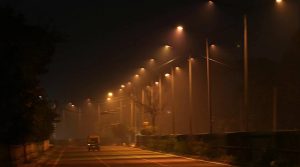$100 Website Offer
Get your personal website + domain for just $100.
Limited Time Offer!
Claim Your Website NowWhile world was looking at Delhi, Kolkata became the most polluted city in India

Source- indianexpress.com
The level of pollutants in Kolkata has surpassed the level of particulate matter in New Delhi, which is globally infamous for its air pollution. In the past 72 hours, the air quality index (AQI) in the City of Joy has dipped to “very poor” category, crossing levels registered in the national capital, making it the most polluted city.
The National Air Quality Index website showed that the overall PM 2.5 count at Rabindra Bharti University (RBU), one of the two stations in the city, stood at 381 (very poor) on Thursday when compared to Delhi’s Ashok Vihar, considered to be the national capital’s most polluted zones, where the AQI was recorded at 292.25. The average AQI at Victoria Memorial was noted at 310.75.
An AQI level between 201-300 is considered to be “poor” while those between 301-400 is considered to be “very poor”. An AQI level between 401-500 is considered to be “severe”.
On Friday, the average AQI at RBU stood at 359.75 while Ashok Vihar’s air quality was recorded at 292.25. An AQI of 288 was registered at Victoria Memorial. On Saturday, the average AQI at RBU stood at 330.25 when compared to Ashok Vihar, where the AQI was recorded at 293. Victoria Memorial noted an AQI of 242.5.
On Sunday, however, the Kolkata air quality showed an improvement with the AQI at RBU being noted at 355 and 246 at Victoria Memorial. At Ashok Vihar, the AQI was registered at 369.
However, for both Kolkata and Delhi, PM 2.5 remained the most prominent pollutant.
Experts said that while the rest of the country is busy experimenting with mixing bio-fuel with diesel to reduce the level of particulate matter in the air, Kolkata has so far done nothing noteworthy.
A day after Diwali on November 7, the air quality in parts of Kolkata had dropped to “very poor” levels as people defied the Supreme Court’s order directing that firecrackers be burst only between 8 pm to 10 pm. Environmentalist Subhas Dutta had said that there was a need to create a mass awareness among people to make them realise the dangers of such pollution levels.



